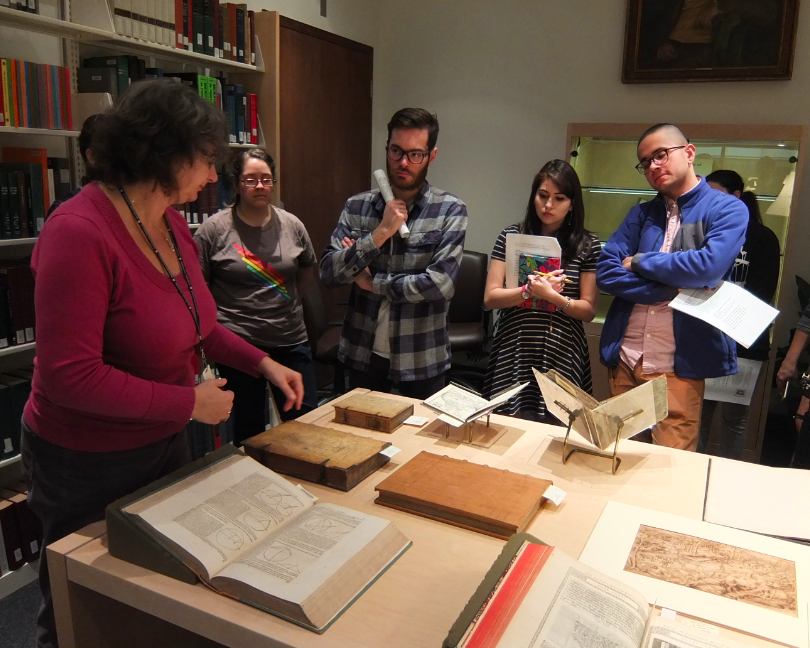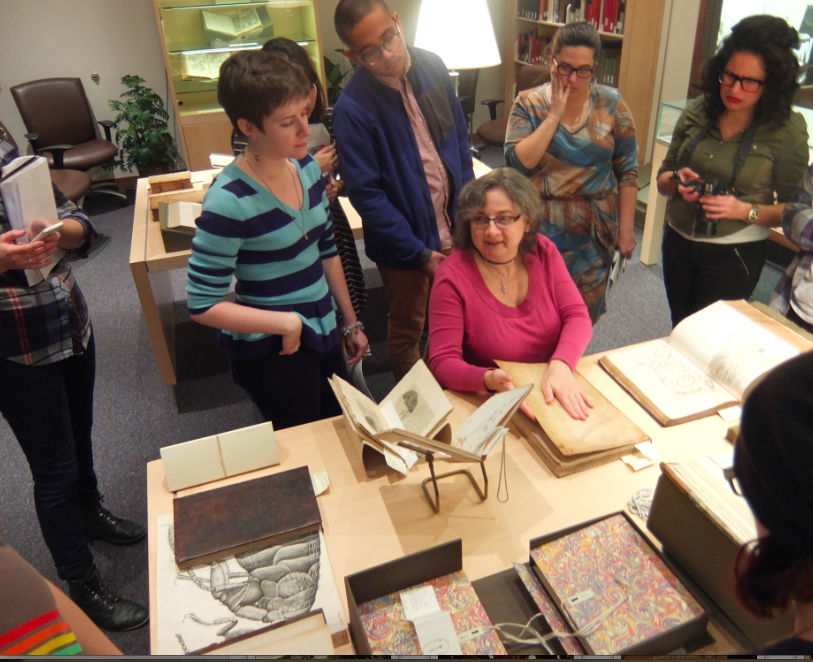This post was written by Lilla Vekerdy, Head of Special Collections.
Recently, a class of book art- and art history students visited the Dibner Library of Science and Technology. Their professor, Kenneth Smith organized this “field trip” for his graduate course “The History of the Western Book” at the Corcoran Museum/George Washington University. The staff of the Dibner prepared a rare book display based on Professor Smith’s selection list, adding items in relation to the general description of the class.

Starting with an original leaf of the Gutenberg 42-line Bible and examples of incunabula (early printed books between 1450 and 1501) the display led the students to 16th century book culture. They examined special features of print material in this rich early period of bookmaking including printing conventions, attributes of contemporary book binding, and questions about hand-paper manufacturing. The volumes were representative of numerous important issues that the students had reflected on previously in their course about the history of books. They gladly recognized (or learned about) printers’ devices, book clasps, blind-tooled leather bindings, “real” book worms, publishing practices, and other related subjects.
The following section displayed 17th and 18th century publications and gave opportunities to discuss the broader dissemination of information, growing readership, the importance of periodicals, and the socially, historically and culturally significant changes the Scientific Revolution and the Enlightenment generated with the aid of books.

The last segment of the exhibit concentrated on modern book art. The imaginative examples were inspired by old rare books scrutinized by book artists and used as “muses” for the creation of new artistic pieces. Pop-up illustrations, original poetry, holographs, accordion-folded pages, montage, collage and other various innovative illustration methods were all part of this selection. The students—as practicing book artist—were especially interested in these books. An “I could/should try to do this too” mindset reflected on their faces and manifested in their remarks. They took many photographs and pointed out several intriguing details on this last table of unusual volumes.
Their professor summarized the class experience in these words: “Today’s session was perfect in every way. The students were giddy with excitement when we had our debriefing. You and the Dibner collections provided them with an indelible experience, something that they will remember long after they’ve forgotten their scholarly reading.”

Be First to Comment